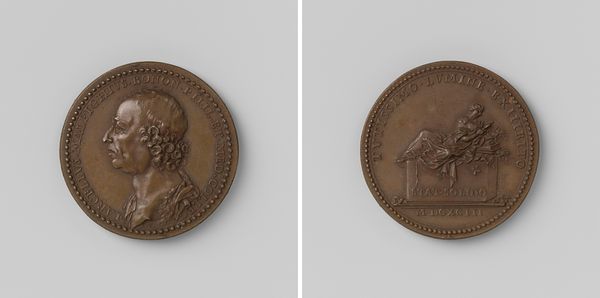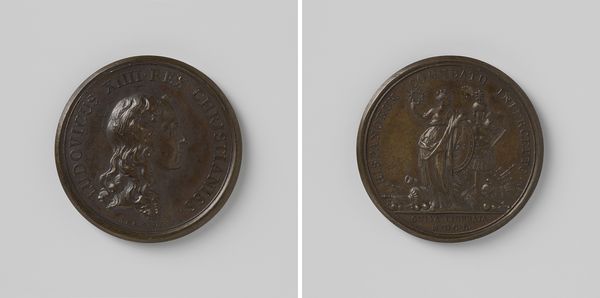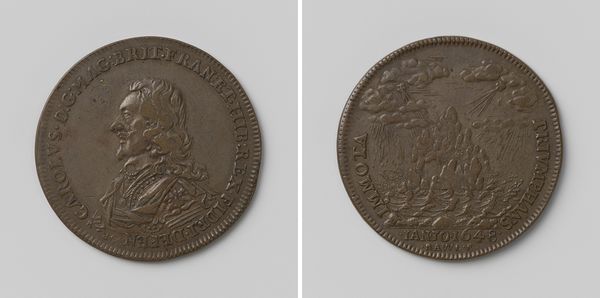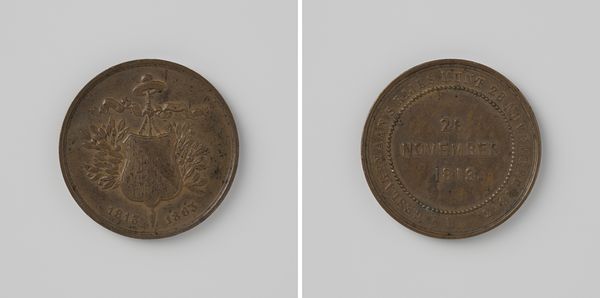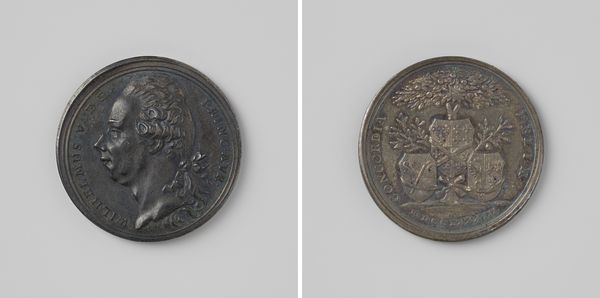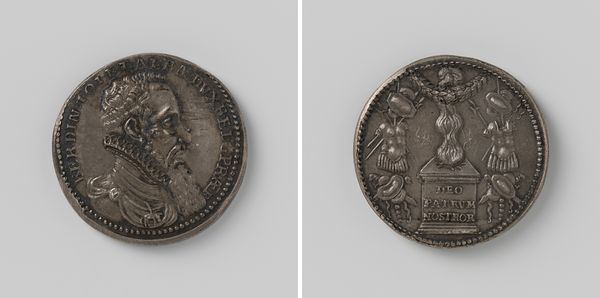
Uitvoering in Amsterdam en vijfentwintigjarig bestaan van het Nederlandsch Gymnastiek-Verbond 1893 1893
0:00
0:00
metal, relief, bronze, sculpture
#
decorative element
#
metal
#
relief
#
bronze
#
sculpture
#
decorative-art
Dimensions: diameter 5.3 cm, weight 72.82 gr
Copyright: Rijks Museum: Open Domain
This silver medal was made in 1893 by the Koninklijke Utrechtsche Fabriek van Zilverwerken van C.J. Begeer, to mark a gymnastics event in Amsterdam. The medal is struck in low relief, a process that involves using a die to impress a design onto a metal blank. This technique, ideal for mass production, reflects the rise of industrial manufacturing in the late 19th century. The choice of silver is significant, too. While not as valuable as gold, silver still carries connotations of prestige and commemoration. The medal’s design features a rampant lion, a symbol of Dutch national identity, and the coat of arms of Amsterdam, crowned to signify civic pride. The inscriptions celebrate the gymnastics event and the 25th anniversary of the Dutch Gymnastics Association. Objects like these offer us a glimpse into the intersection of labor, leisure, and national identity during a period of rapid industrialization. It reminds us that even seemingly simple objects carry rich social and cultural significance embedded in their making.
Comments
No comments
Be the first to comment and join the conversation on the ultimate creative platform.


